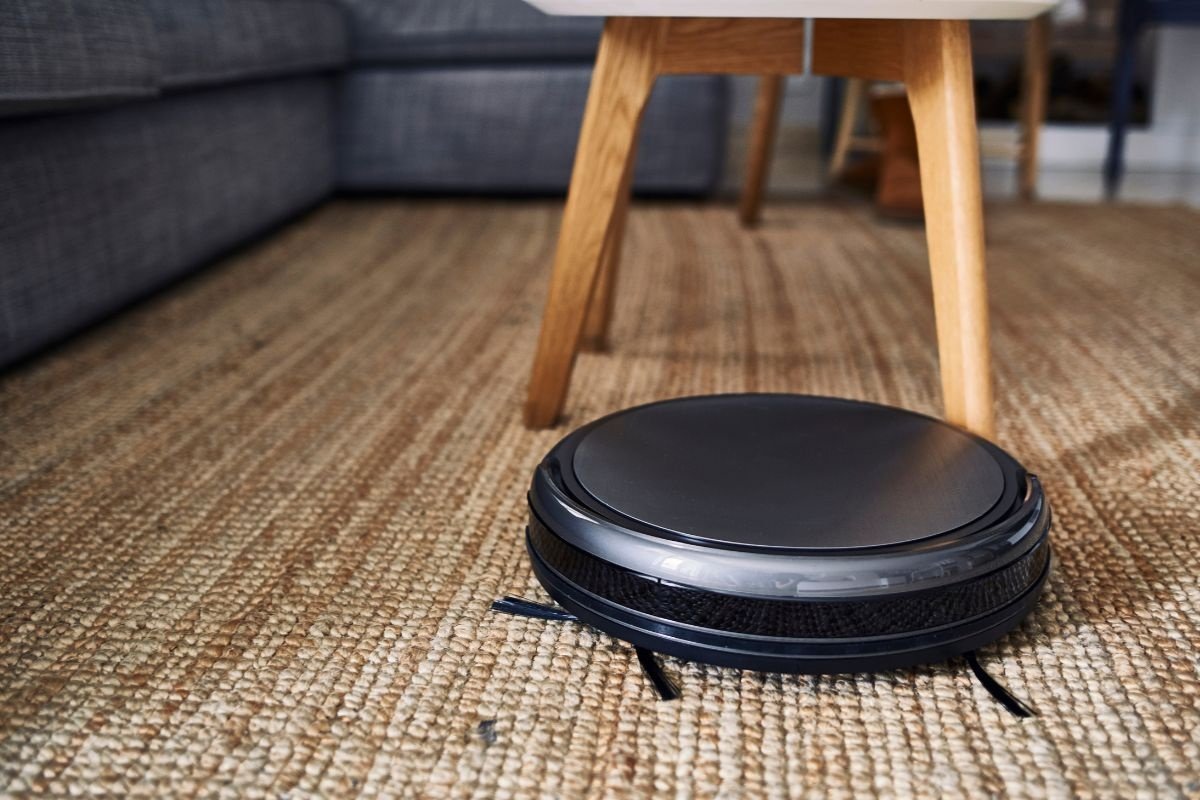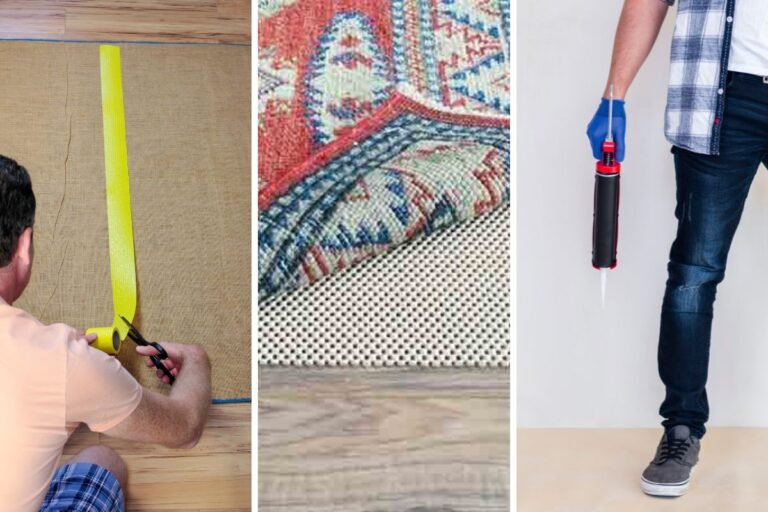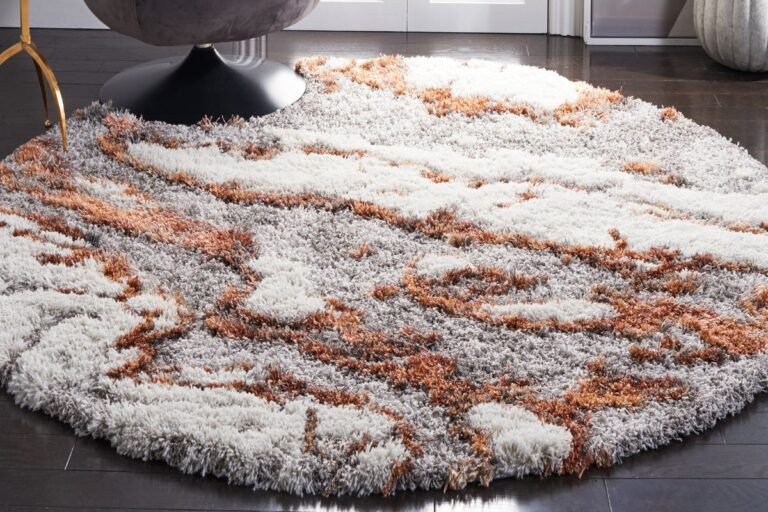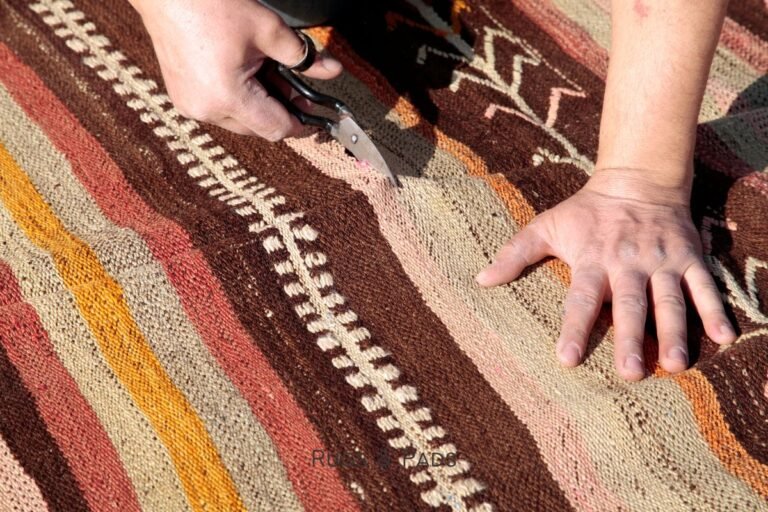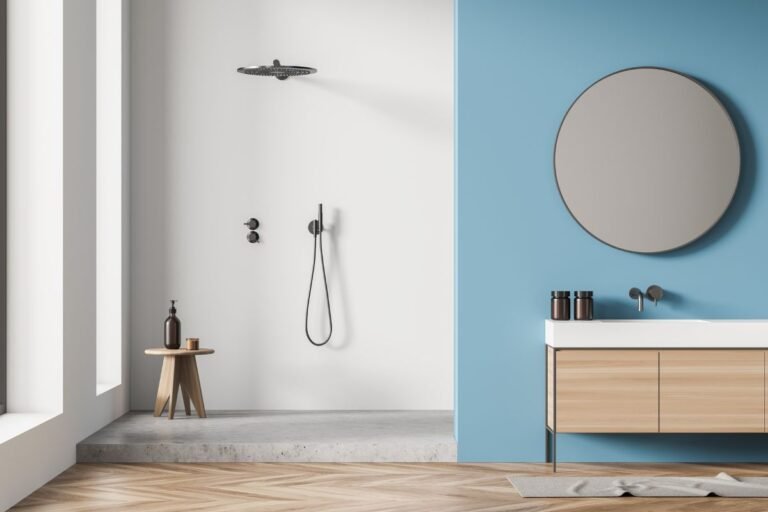If you’re considering using a Roomba (or any robot vacuum) on your area rug, or you already have one and aren’t sure how to make it work with your rug, you’re in the right place.
I happen to have a lot of experience with rugs and Roomba 💅
I’ll give you the rundown on everything you need to know to use your Roomba on your rug effectively. From rug types to best practices, I’ll go through every mundane detail.
You’ll be coming home to clean rugs in no time.
Can Roomba Go Over Rugs?
So, can a Roomba really handle your rug? The answer is – it depends! There are a few factors that determine whether or not a robot vacuum cleaner can effectively clean a rug.
Many robot vacuums, including Roombas, have adjustable heights to accommodate different rug types. This feature allows the vacuum to maintain optimal suction power and avoid getting stuck or damaging the rug. Some robot vacuums may also have sensors that can detect the thickness of the rug and adjust the height automatically.
The rubber brush makes it easy to scrape over the top of carpet fibers… making it a great vacuum cleaner for households with pets!
I found the Roomba to get caught on the tassels of the small rug in the kitchen and the bathroom rug. Both of these got caught up in the brushes but the Roomba was pretty nifty and, in both cases, pivoted until it could release the materials.
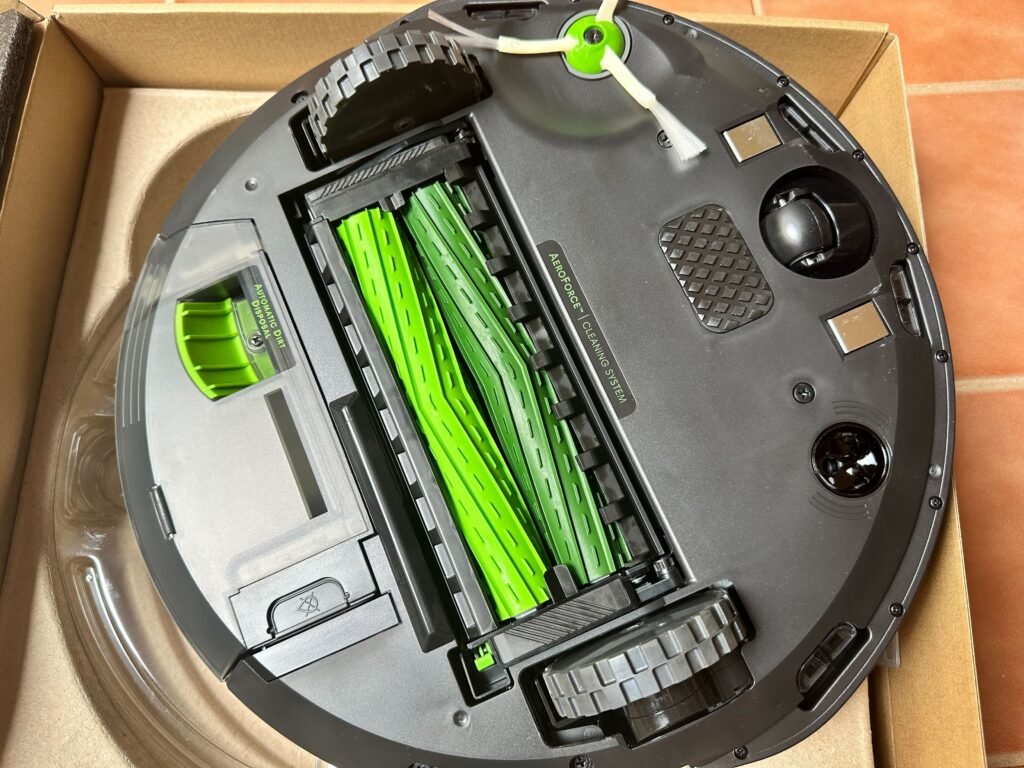
In fact, it’s only needed my assistance once and that’s because of the quirky setup in my grandma’s indoor atrium (think: uneven stones, rocks, and water fountain). So, not rug related at all.
It’s important to check the specifications of your particular model to see if it has adjustable height settings and what range of thickness it can accommodate.
There are a few things about area rugs and carpets that can make it difficult for robot vacuums to go over rugs.
- Rug thickness: Roombas work best on low-pile rugs. The carpet fibers in high pile carpets can get stuck in a robot vacuum because they can wrap around the brush roll, causing the vacuum to become clogged or malfunction. However, many advanced robot vacuums have improved sensors and brush rolls that can better navigate and clean these types of carpets without getting stuck. I’ve noticed the my Roomba has disengaged itself pretty easily in most situations.
- Material: Roombas work well on most types of rug materials, including wool, synthetic fibers, and even shag. However, certain materials like silk or antique rugs may require special care, and may not be suitable for Roomba cleaning because they are delicate and can be easily damaged by the brushes or suction of the vacuum.
- Obstacles: Most robot vacuums use a combination of sensors, infrared light, and algorithms to detect and avoid obstacles, such as furniture or walls, and navigate around them to clean the surrounding areas. Buuuut if your area rug has a lot of furniture or other obstacles (like dog toys or pillows and blankets), the robot vacuum may have trouble navigating around them. It’s helpful to clear the room of any objects that could impede the vacuum’s movement. That being said, my Roomba finds every nook and cranny in my grandma’s cluttered house and surprisingly does a great job (thanks to the spinning bristles on the front-right corner).
- Bumps in area rug: Wrinkles or bumps in area rugs can affect a robot vacuum by causing it to get stuck or fail to properly clean the rug. If the rug is not flat and smooth, the vacuum may have difficulty moving over it, or it may not be able to reach all areas of the rug. In some cases, the vacuum may even become stuck or damaged if it runs into a particularly large or steep bump. To avoid these issues, use a non-slip rug pad to keep rugs in place.
Keep in mind that different Roomba models have different capabilities. Some Roombas are designed specifically for handling rugs, while others may not be as effective. If you’re not sure whether your Roomba can handle your rug, check the manufacturer’s recommendations or consult with a professional.
What Types of Rugs Can Roomba Clean?
Roomba robot vacuums can generally clean a variety of rug types, including:
- Low-pile rugs: These rugs have a short, tightly woven pile and are often made of materials such as nylon or polyester. Roombas can easily glide over low-pile rugs and effectively remove dirt and debris.
- Flat-weave rugs: Flat-weave rugs, such as kilims or dhurries, are made of tightly woven threads and have a thin, flat surface. Roombas can effectively clean flat-weave rugs without getting stuck or causing damage.
- Medium-pile rugs: These rugs have a slightly longer pile than low-pile rugs and may be made of materials such as wool or cotton. Many Roombas can effectively clean medium-pile rugs, although some models may struggle with particularly thick or shaggy textures.
While robot vacuums can generally clean a variety of rug types, some materials or styles may require special care or may not be suitable for robot vacuum cleaning. For example, delicate antique rugs or silk rugs may be easily damaged by the brushes or suction of the vacuum.
Because of the rubber brushes, I find that it works well with most floor types in my grandma’s house.
Some high-pile or shaggy rugs may create more resistance for the vacuum, causing some robot vacuums to struggle to move around, get stuck, or not be able to vacuum properly on thick carpets. High pile carpets can also reduce suction power in a robot vacuum by creating more resistance for the vacuum’s motor and impeller, which can cause the vacuum to struggle or even stall.
Always check the manufacturer’s recommendations and specifications before using your Roomba on a new type of rug to ensure that it can effectively and safely clean the rug.
Using Roombas on Rugs
Robot vacuum cleaners are pretty straight forward. You pretty much just set your cleaning schedule and then let them do their thing.
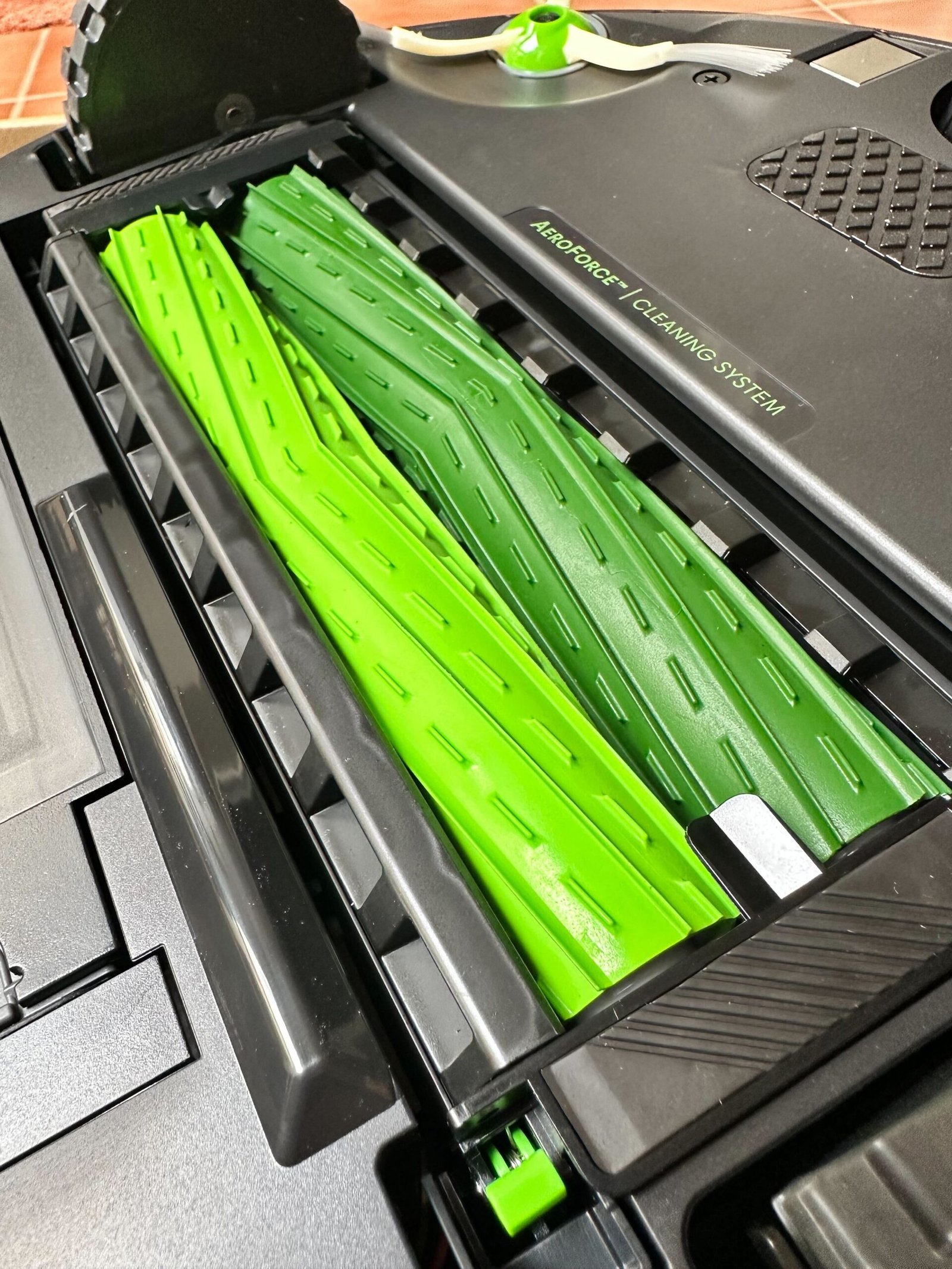
Before starting the robot vacuum cleaner, make sure the room is clear of any objects or obstacles that could interfere with its movement. This will allow the vacuum to move around freely and clean your rug effectively.
You’ll also need to prepare your rug for cleaning. If your area rugs are especially dirty, then remove any loose dirt or debris that might clog the robot vacuum’s brush or filters.
If your robot vacuum has different cleaning modes, make sure to select the appropriate one for your rug. Most robot vacuums will allow you to adjust the height of the vacuum to match the thickness of your rug.
And don’t forget to check up on your busy little robot vacuum. This includes emptying the Roomba’s dustbin, cleaning its brushes and filters, and rotating the rug to ensure even wear.
Benefits of Using Roombas on Rugs
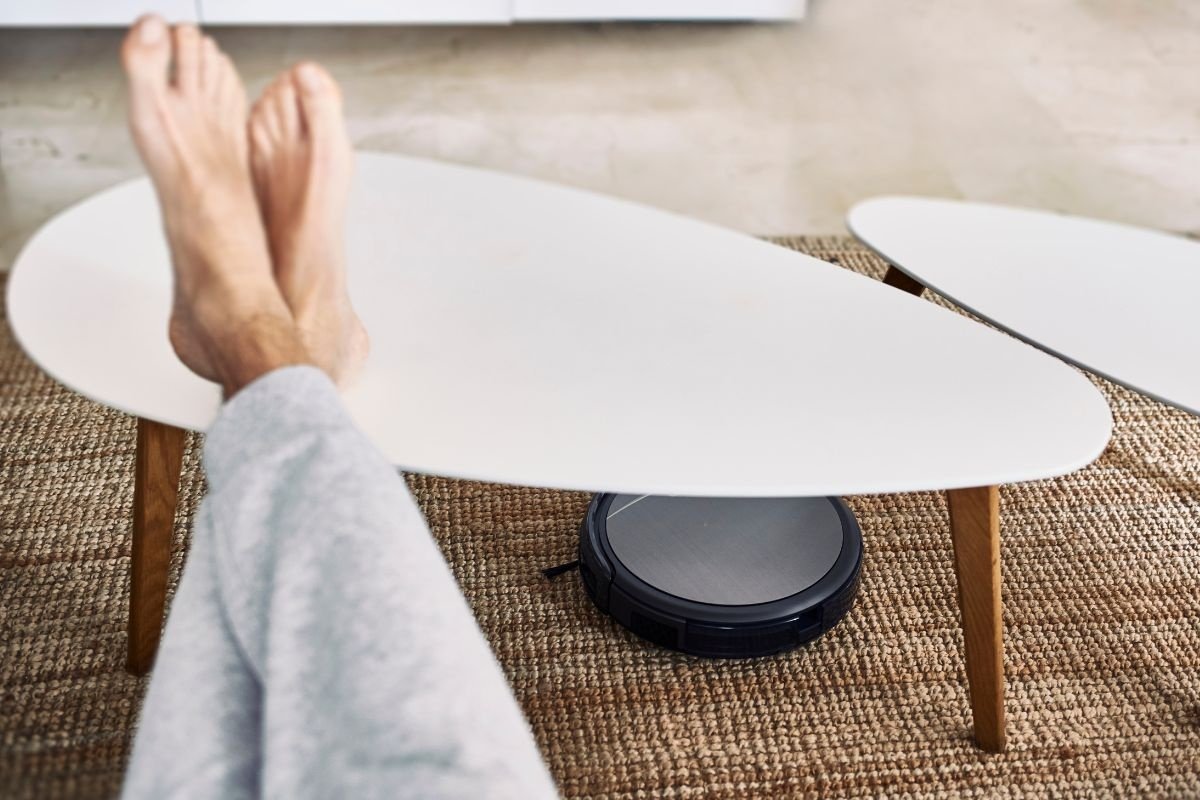
Using a Roomba on your area rug doesn’t just make life easier – it can also provide a number of benefits. Here are a few advantages of using a Roomba on your rug:
- Improved cleanliness: Roombas are designed to effectively remove dirt and debris from your rug, which can help improve the cleanliness of your home. This is especially beneficial for people with allergies or respiratory issues.
- Time-saving: Using a Roomba on your rug can save you time and effort compared to manually vacuuming your rug. This is especially beneficial for larger rugs or homes with multiple rugs.
- Energy efficiency: Roombas are designed to be energy-efficient, using less power than traditional vacuum cleaners. This can help reduce your energy consumption and lower your carbon footprint.
- Better indoor air quality: By effectively removing dirt, dust, and pet hair from your rug, Roombas can help improve indoor air quality, which is beneficial for both you and the environment.
- Area rugs last longer: Regular vacuuming with a Roomba can help extend the lifespan of your rug by reducing wear and tear from dirt and debris buildup.
These are benefits that everyone can enjoy… and benefits that these groups especially can enjoy:
- Homes with pets: Pets can shed a lot of hair and dander, which can be difficult to remove from rugs (and literally everything else). Using a robot vacuum on your rug can help keep pet hair under control and improve indoor air quality.
- High-traffic areas: Rugs in high-traffic areas can accumulate dirt and debris quickly. Using a Roomba on these areas can help prevent dirt buildup and extend the life of your rug without you ever having to think “I just vacuumed that!”.
- Busy households: I travel a lot and also have people visiting a lot, so this is a great gadget for me. If you have a busy household with kids or frequent guests, using a Roomba on your rug can help keep your home clean and tidy without requiring too much effort on your part.
- Limited mobility: I was originally shopping for robot vacuums for my sweet little grandma. She recently hurt her hip and has a thousand area rugs throughout her home, so I wanted to get her something that could go over rugs and stay out of my grandma’s way.
Common Questions
Robot vacuums are pretty damn easy to use, but actually a lot more complicated than you might realize (okay, just me?!). Here are the questions I had as I was shopping for the best robot vacuums.
How Do You Keep Robot Vacuums In A Certain Area?
With the coolest robot vacuum magic trick: boundary strips! Boundary strips are physical barriers that are placed on the floor to restrict the movement of a robot vacuum. They are typically magnetic or adhesive strips that can be cut to the desired length and placed in areas where you do not want the robot vacuum to clean.
The vacuum’s sensors detect the boundary strip and prevent it from crossing over into the restricted area. This is a useful feature for areas with delicate or valuable items that you want to protect, or for rooms that are off-limits to the robot vacuum.
How Can You Make Your Roomba Avoid Rugs?
If you want your Roomba to avoid cleaning certain rugs or areas in your home, there are a few ways to make it happen:
1. Use boundary strips: As mentioned earlier, you can use boundary strips to physically block off areas you don’t want your Roomba to clean, such as certain rugs or rooms. Simply cut the boundary strips to size and place them on the floor around the restricted area. The Roomba’s sensors will detect the boundary strips and prevent it from crossing over into the restricted area.
2. Use virtual walls: Some Roomba models come with virtual wall devices, which emit an infrared beam that creates a boundary for the Roomba. You can place these devices in areas you want the Roomba to avoid, such as around certain rugs or furniture.
3. Use the Roomba app: Many Roomba models have accompanying apps that allow you to customize the cleaning schedule and create virtual maps of your home. You can use the app to set up no-go zones, which are areas the Roomba should avoid during cleaning.
By using these methods, you can help your Roomba avoid cleaning certain rugs or areas in your home, and focus on the areas that need cleaning the most.
Can Roomba go over rugs with fringe?
Roombas can generally go over rugs with fringe, but there are some factors to consider. If the fringe is long and thick, it may get tangled in the Roomba’s brush roll and cause the vacuum to become clogged or malfunction. Additionally, the Roomba’s sensors may detect the fringe as an obstacle and cause it to avoid cleaning the area.
Does Roomba Mop avoid rugs?
Yes, most Roomba mop models have a feature that allows them to avoid cleaning rugs or carpeted areas. This is typically achieved through the use of sensors or virtual barriers that can be set up using the accompanying app. You can set up no-mop zones or virtual walls around the rugs or carpeted areas you want the Roomba to avoid, and the Roomba will steer clear of those areas during cleaning. This allows you to have the convenience of both vacuuming and mopping your floors without damaging your rugs or carpets.
Can Roomba damage rugs?
Roombas can potentially damage rugs if not used properly or if the rug is not suitable for vacuum cleaning. The vacuum’s brush roll or suction power can cause damage to delicate or fragile rugs, such as antique rugs or silk rugs.
I also mentioned earlier that if the rug is not flat and smooth, the Roomba may get stuck or cause damage to the fibers or edges of the rug.
To avoid damaging your rugs with a Roomba, use a non-slip rug pad to keep area rugs in place and easy for the robot vacuum to go over rugs.
How long is a cleaning session?
The length of a cleaning session for a robot vacuum varies by model and depends on factors such as battery life, cleaning mode, and the size of the cleaning area.
In general, most robot vacuums can clean for at least 60 to 90 minutes on a single charge before needing to be recharged. Some models may have longer battery life or may be able to automatically return to their charging dock when the battery runs low.
The cleaning session may also be affected by the cleaning mode – for example, a turbo mode may use more battery power and result in a shorter cleaning session. The size of the cleaning area can also affect the length of the cleaning session, as larger areas may require multiple charging and cleaning cycles.
Final Thoughts
Using a Roomba on your area rug can be a game-changer for maintaining a clean and tidy home.
From improved cleanliness to time savings, using a Roomba on your rug can seriously improve your quality of life. Whether you’re a pet owner, a busy parent, or just looking for an easier way to keep your home clean, a Roomba can help you achieve your goals. 💪
So what are you waiting for? Give your Roomba a spin on your area rug and see for yourself how much better life can be. And if you have any questions or tips of your own, be sure to share them in the comments below – I’d love to hear from you!

